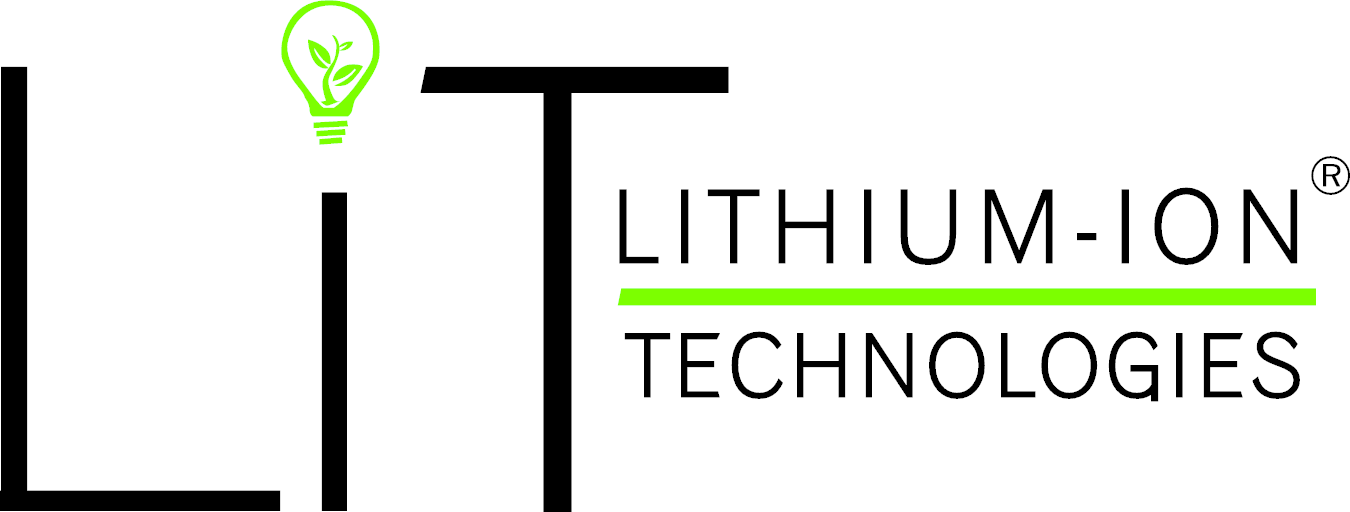ADVANTAGES OF LITHIUM ION vs LEAD ACID
Built in battery protection system (BPS)
-
Low Voltage Protection Switch – Automatically disconnects at 10.5V.
-
Over Voltage Protection Switch – Automatically disconnects at 15.8V.
-
Short Circuit Protection Switch – Automatically disconnects should a short occur.
-
Reverse Polarity Protection Switch – Automatically disconnects should the polarity be accidently reversed.
-
Internal Cell Balancing – Automatically balances cells.
-
Charge Balancing – Independent balancing for multiple batteries connected in parallel or in series.
This Battery Protection System is designed to last throughout the life of the battery and provide reliable power for thousands of cycles.
Significantly Less Weight
Usually about 70% lighter than the same size lead acid battery.
Orientation
A LiT battery can be mounted and operated in any direction.
Rapid Charge
A Lithium Ion Technologies® battery can be fully recharged in as little as 1 hour from a completely dead battery. If you have a 100 amp hour Lithium Ion Technologies® battery and a 100 amp charger, It will take only 1 hour to fully re-charge.
No Voltage Drop
Voltage Curve is nearly flat giving out higher voltage and power through out the entire discharge cycle. A Lithium Ion Technologies® 12V Lithium Ion Battery has little to no voltage drop while cranking your motor. This provides around 25% faster starting than with a lead battery. When cranking your motor with a lead battery the voltage can drop down to 9V causing your starter to spin slower.
Charge Efficiency
When charging a lead acid battery you can lose between 15 – 30% of the energy between your charger to the battery due to heat loss. A Lithium Ion Technologies® battery is 99.1% efficient and will accept nearly 100% of the power from your charger, solar panels, or other energy generating technologies.
Charge Algorithm
Lithium Ion Technologies® Lithium Ion Batteries can be charged with constant current and constant voltage (CC, CV). This means that almost any battery charger regardless of the algorithm can charge a Lithium Ion Technologies® battery. An algorithm typically slows down the current flowing into the battery from the charger. Lead Acid batteries heat up and swell if they receive constant current so charger manufacturers create algorithms to slow down the current protect the battery from over heating. A LiT® battery will not heat up while charging.
Bulk, Absorb, and Float Charging
If your charger is programmable for different types of batteries or custom settings you will want to set it up as follows: Bulk 14.4V, Absorb 14.6V, and float at 13.6V.
No Self Discharge
Lithium Ion Technologies® batteries self discharge less than 3% per month. A Lithium Ion Technologies® battery can hold a full charge for over 1 year and has virtually no self discharge. Lead batteries can lose up to 30% of their capacity per month due to self discharging.
Vibration Proof
LiT® cells are bolted together and made of solid construction.
There are no fragile or brittle plates made of lead, which can be prone to failure over time as a result of vibration.
Amp Hours
What many battery owners fail to realize about lead acid batteries is that its capacity (Ah) rating is usually specified at the 20 hour discharge rate. At high rates of discharge above 20A the usable capacity can be reduced to less than half due to “Peukert’s Effect”. A 225AH Lead acid battery at an 80A discharge rate may only run for 53 minutes.
Whereas, a Lithium Ion Technologies® 12V 225AH Lithium Ion Technologieshium Ion Battery discharged at an 80A rate would last for almost 3 hours. When calculating amp hours with a Lithium Ion Technologies® battery you can use linear equations to size your battery bank.
Higher Energy Density
4X higher energy density than lead batteries.
Superior “Usable” Capacity:
A Lithium Ion Technologies® battery can be fully discharged without damaging the battery. Lead batteries typically only provide 50% usable capacity from the amp hour rating. This means that if your application requires 400 amp hours of usable capacity you would have to size a lead acid battery bank of 800 amp hours.
Rated Capacity
Lithium Ion Technologies® 12V Lithium Ion Batteries have about 8% more capacity than rated. A 100AH LiT® Battery can produce 108AH of usable capacity.
Not affected by Peukert’s Law
Another huge advantage of Lithium Ion Technologies® Lithium Ion Batteries is that Peukert’s losses are essentially non-existent. This means that a Lithium Ion Technologies® battery can deliver its full rated capacity.
LiT® Cell Advantages
-
Cells – Lithium Ion Technologies® products are built with 3.2V 5AH cylindrical Lithium Ion Cells. Each cell is designed with an explosion proof stainless steel case, flame retardant electrolyte, and a built in thermal fuse.
-
Consistency – Lithium Ion Technologies® 3.2V 5AH cells are mass produced with production capabilities reaching 500,000 cells per day.
-
Design – Lithium Ion Technologies® cells are bolted together to increase strength, conductivity, and quality design of our LiT® batteries. The cells are bolted through length way circuit boards that provide additional strength, balancing, and short circuit protection. In the unlikely event one or more cells were to fail, the circuit boards will take that cell(s) off line and allow the battery to continue to function normally at 12V with little reduced capacity.
-
Balancing – Lithium Ion Technologies® cells are grouped together based on 10 consistencies when building each battery pack. The bolted cell design provides a stronger connection for





